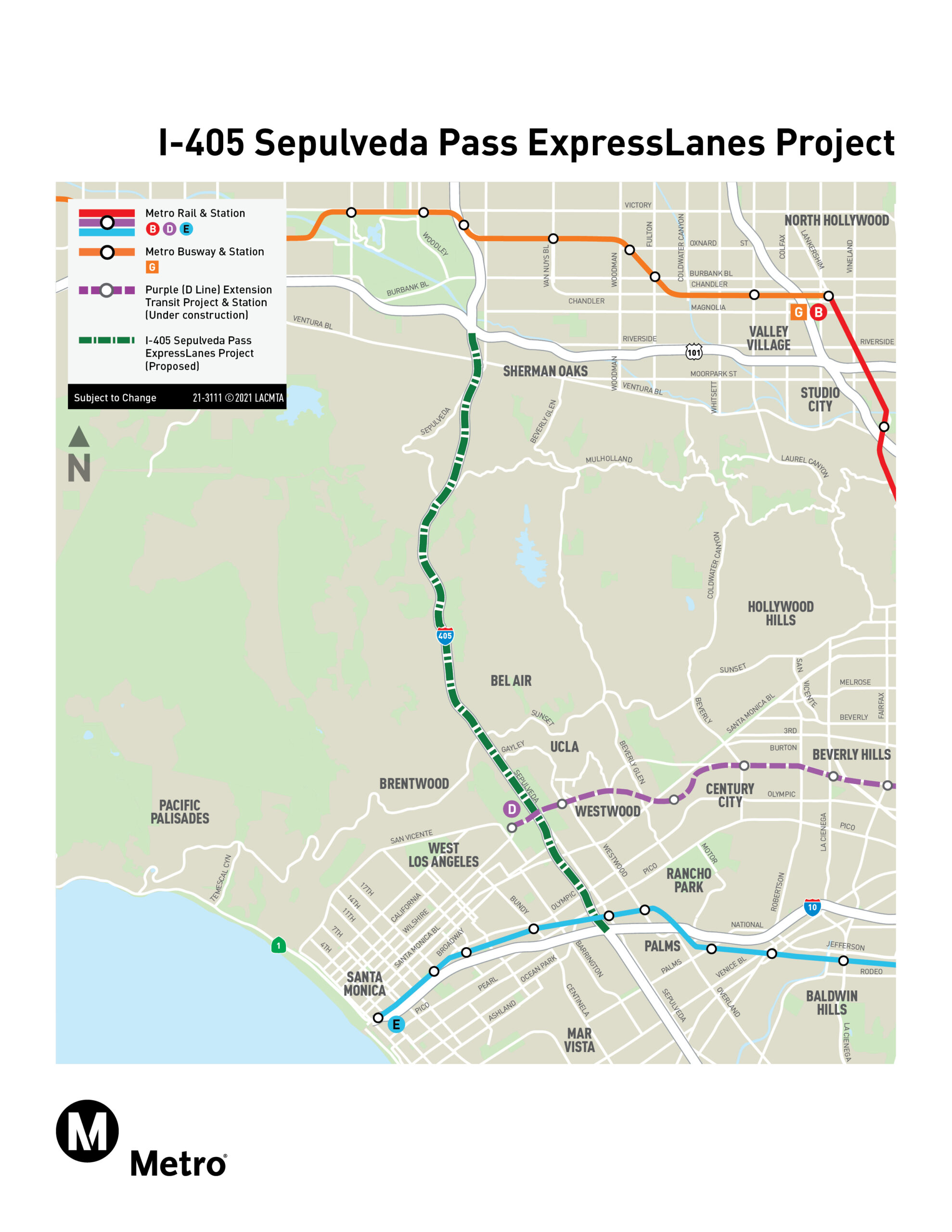I-405 Sepulveda Pass ExpressLanes Project
Reducing traffic congestion for one of LA’s most heavily traveled corridors


Metro and Caltrans are planning ExpressLanes on the I-405 between I-10 and US-101 through the Sepulveda Pass—one of the most congested corridors in the country. The project would convert existing carpool (HOV) lanes into High-Occupancy Toll (HOT) lanes and, potentially, a second managed lane in each direction to improve reliability, safety and person throughput. ExpressLanes use dynamic tolling to ensure more consistent travel times and to give travelers—including carpoolers, transit riders and toll-paying drivers—more predictable options. The project also advances regional efforts to create a connected ExpressLanes system across LA County. Metro is also looking at alternatives such as a no-build option, various lane configurations and operational approaches. Community feedback continues to inform planning and environmental review, with the Final Environmental Impact Report/Statement (EIR/EIS) expected in 2025.

Business and Community Support
Understand the project
Learn more about the project’s alternatives, ranging from no-build to new ExpressLanes with multimodal upgrades.
Explore the Details
Discover interactive maps and video explainers, and all the ways Metro is planning a better commute on the 405.
Attend a Community Meeting
Stay informed by attending an upcoming community meeting, virtually or in-person.
Frequently Asked Questions
The Sepulveda Pass stretch of I‑405 is one of the most congested and complex highways in the country—connecting the San Fernando Valley with the Westside and South Bay, and carries nearly 290,000 vehicles daily. This section also averages 56 hours of delay per commuter annually. ExpressLanes aim to reduce congestion and give drivers, carpools, and transit riders better travel options.
ExpressLanes are dynamically priced high-occupancy toll (HOT) lanes. Carpools, buses, motorcycles and clean-air vehicles can travel toll-free with a FasTrak Flex transponder. Solo drivers can pay to access smooth, more predictable travel without using cash or stopping at booths.
Many carpool lanes in the Sepulveda Pass are congested so much of the time that they offer little travel-time benefit. Converting these lanes to ExpressLanes—or adding a second managed lane—helps ensure faster, dependable travel.
Toll rates adjust in real-time based on demand—higher during peak congestion, lower when traffic is lighter. This helps create steady speeds and reliable travel times. Users must have FasTrak Flex transponders set for occupancy; CHP and Metro staff enforce correct usage.
The project is part of a broader regional ExpressLanes network, designed to connect I‑405 with other major corridors like I‑10 and I‑605. It also complements other transit and active transportation investments through the Sepulveda Pass.
Get Involved
Help shape this project for good. We want to hear from you:

